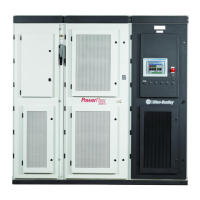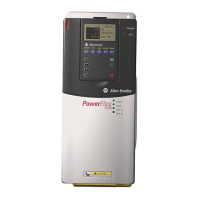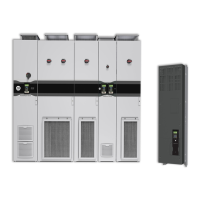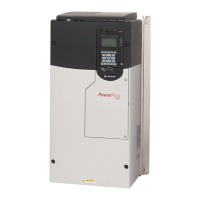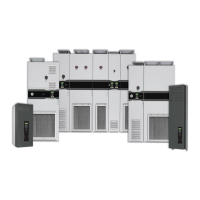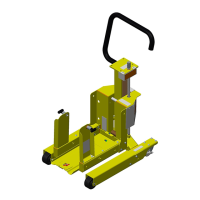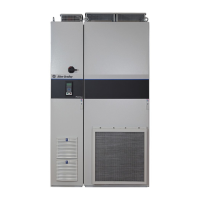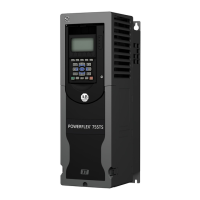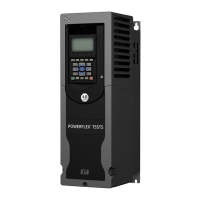Parameter Descriptions 2-51
7000-TD002A-EN-P – September 2007
Motor Power Factor [Mtr Power Factor]
Linear Number: 692
Minimum Value: 0.00
Maximum Value: 1.00
Access Level: Service
Read/Write: Read Only
This parameter displays the measured motor power factor. It is calculated as the ratio of the real power
(kW) to total power (kVA). The motor will always be a lagging power factor (unless it is a synchronous
motor) and the parameter value is valid when the drive is running in closed-loop mode with valid
frequency feedback.
Stator Q-Axis (Torque) Current [MtrTrq Current]
Linear Number: 339
Minimum Value: -4.000 pu
Maximum Value: 4.000 pu
Access Level: Service
Read/Write: Read Only
This parameter is the calculated Q-axis or torque component of the stator current. It is positive for
motoring and negative for regenerating.
Stator D-Axis (Magnetizing) Current [MtrFlux Current]
Linear Number: 338
Minimum Value: -4.000 pu
Maximum Value: 4.000 pu
Access Level: Service
Read/Write: Read Only
This parameter is the calculated D-axis or magnetizing component of the stator current. It is positive for
magnetizing and negative for de-magnetizing. This current is provided from the inverter output and the
motor filter capacitor.
Stator Frequency from Voltage Model [StatFrqVoltModel]
Linear Number: 485
Minimum Value: 0.0 Hz
Maximum Value: 100.0 Hz
Access Level: Service
Read/Write: Read Only
This parameter displays the value of stator frequency determined from the voltage model. This parameter
is particularly useful in Open Loop Test Mode, when we are testing all the feedback paths to ensure the
integrity of the system.
Stator Frequency from Current Model [StatFrqCurModel]
Linear Number: 486
Minimum Value: 0.0 Hz
Maximum Value: 100.0 Hz
Access Level: Service
Read/Write: Read Only
This parameter displays the applied stator frequency determined from the Current Model. For Sensorless
drives, during start up, the frequency is equal to the desired speed reference plus the calculated slip
frequency Slip Frequency (343). For Pulse Tach drives, the frequency is equal to the measured speed
feedback plus the slip frequency. The Slip Frequency is calculated using the indirect vector control model.
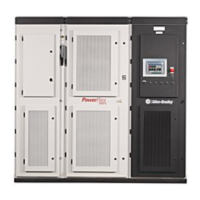
